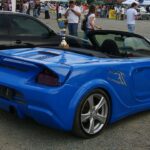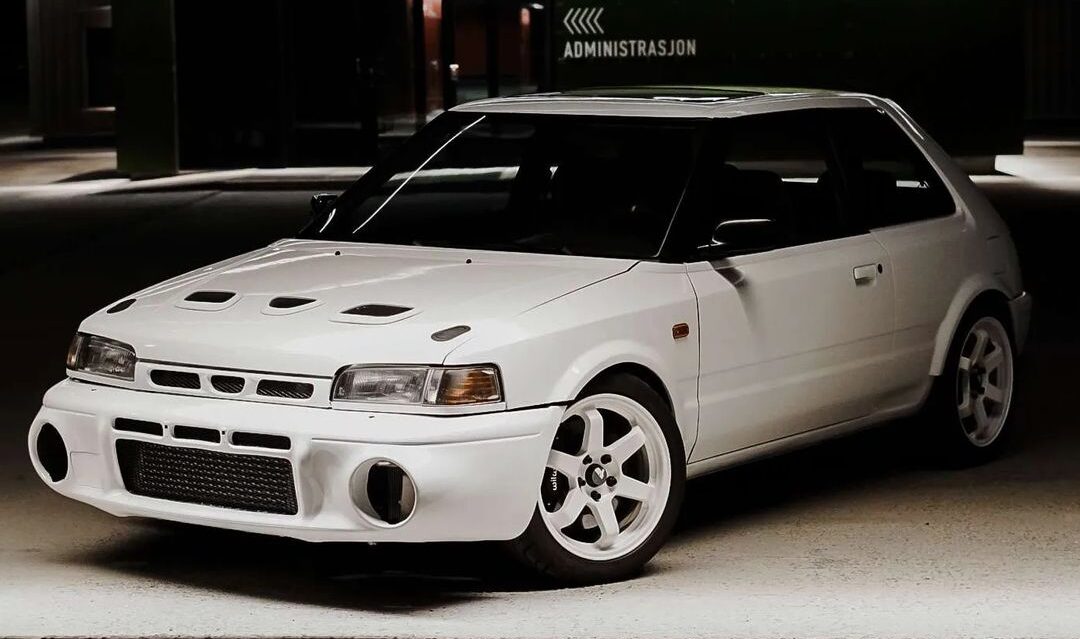
Mazda is perhaps best known for its iconic sports cars, like the MX-5 and RX-7, but before coining its Jinba Ittai ethos, the Japanese carmaker could be seen attacking some of the world’s toughest rally stages.
In the ’80s and ’90s, Mazda experimented with rally cars based on the popular 323 model, and actually found some success in Group A.
Stian Edvardsen was one of those who saw the potential in these cars at an early age. Some guy from the area where he grew up drove a Mazda 323 GT-R, and Stian thought this was one of the coolest things in the world. After blagging a ride in the passenger seat, the young man quickly decided then and there that he needed this car in his life.
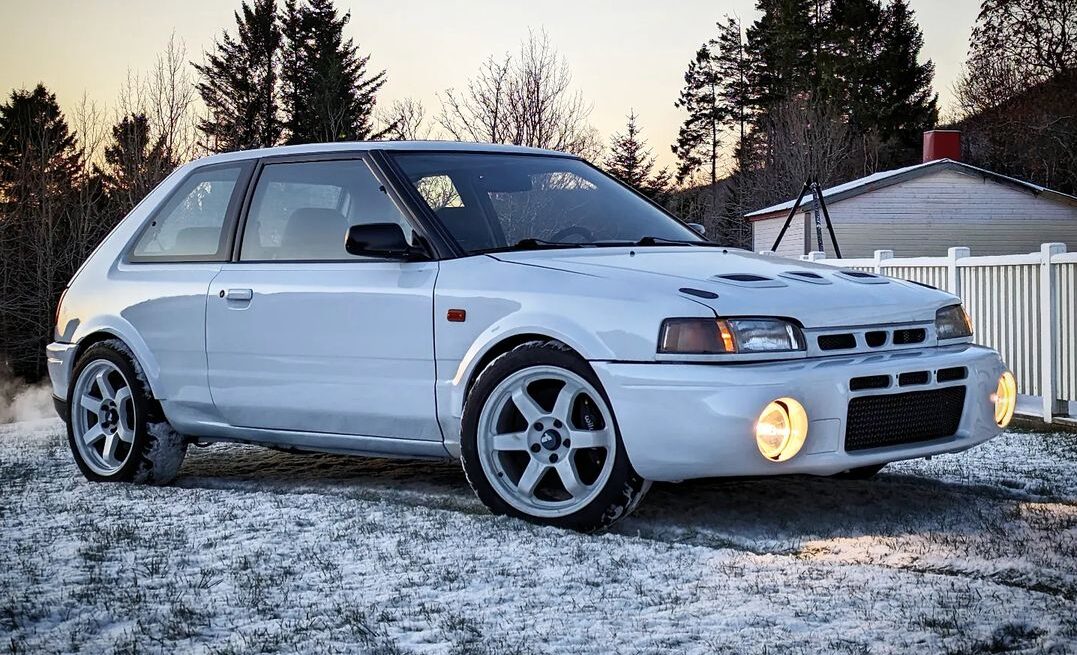
In August 2006, he finally got his hands on the 323 GT-X you see here, but he turned it into a GT-R, a model that was originally reserved for the Japanese market.
Strictly speaking, it’s not entirely accurate to call this a 323 GT-R, so Stian has christened it the GT4-R.
You might think that name sounds a bit strange since both the GT-X and GT-R models had four-wheel drive. Well, maybe it helps if we call it the GT-Four-R?
Stian is the first to admit that the original Mazda drivetrain is not the most robust, but Toyota, on the other hand, is known for making bulletproof components that can handle all sorts of abuse.
The solution was to use a drivetrain from the Toyota Celica GT-Four, a legendary rally car that was driven on gravel roads by none other than Carlos Sainz — who, by the way, got a special Celica GT-Four Carlos Sainz Edition model named after him, but now we’re getting off-track.
With the GT-Four drivetrain in place, Stian could increase his Mazda’s power to a level the rally world haven’t experienced since Group B cars were a thing, flying through rows of spectators (sometimes with fatal consequences) — but Stian’s GT4-R is built for street use, not forest shenanigans.
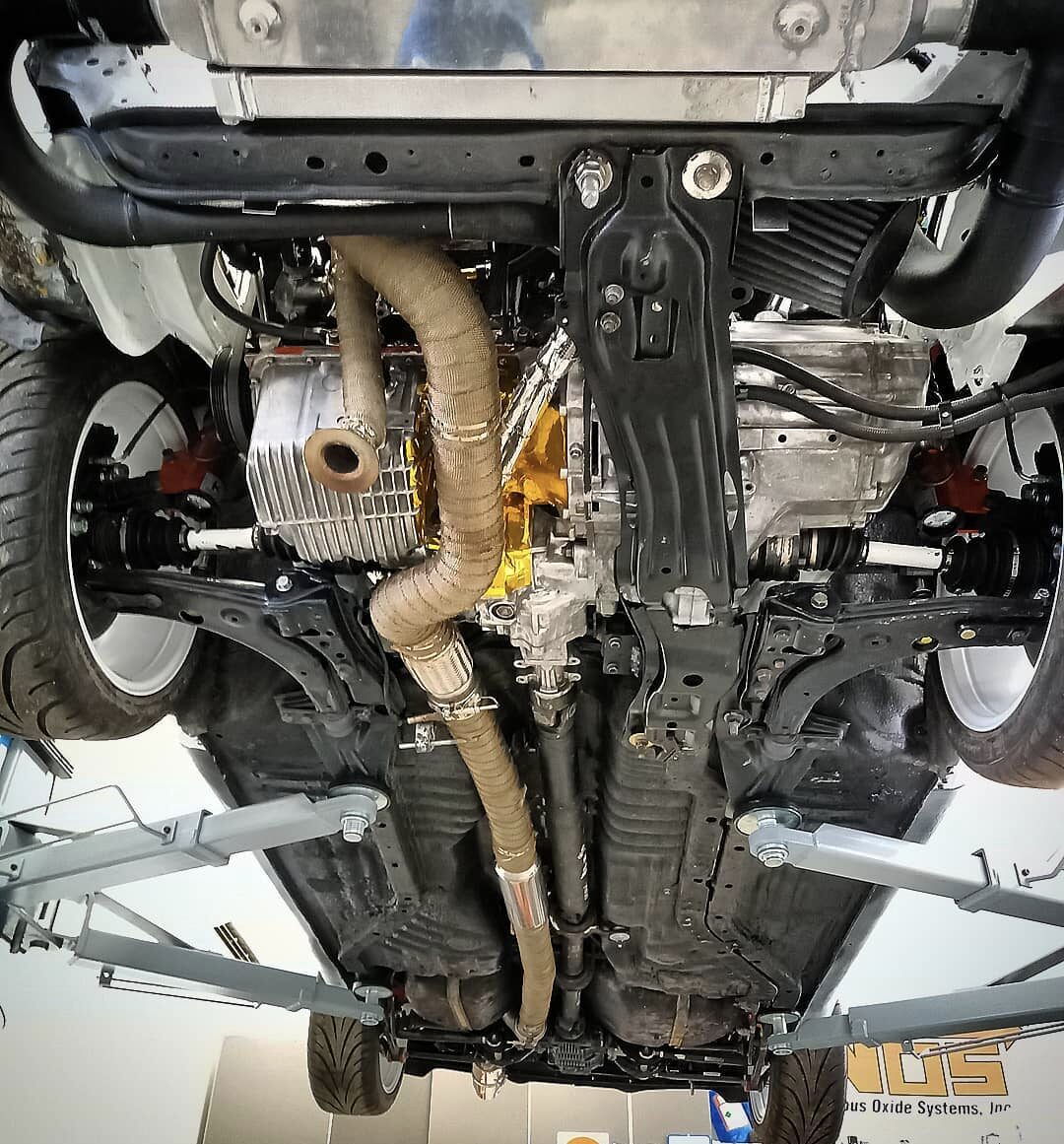
He’d found a recipe for converting his Mazda 323 GT-X to Toyota Celica GT-Four drivetrain, which is much more durable than the original. With it installed, it now became possible to extract much more power from the engine without having sleepless nights worrying about gearbox parts and axles scattered across the asphalt.
Even though he had found a solution to the problem, it wasn’t as simple as buying the parts and bolting them on. It required a lot of planning and research, not to mention all the work involved to make everything fit together.
While the gearbox adapter plate was bolt-on, he still had to create more space for the starter and other parts, so he fired up the angle grinder. The oil pan had to be cut and welded because Toyota’s transfer case is much larger, and he also had to grind it down.
Since the Toyota axles were longer than Mazda’s, Stian used ball joints from a Mazda RX-7. The driveshaft had to be modified, as did the rear subframe to fit the Toyota differential.
He also had to find a special clutch since the clutch itself needed to fit Mazda but with Toyota spline. In addition, there were things like shift cables, shifter, etc. This was anything but plug-and-play, but seeing the final result, I like to think it was worth it!

Now that the drivetrain was in place, Stian could finally unleash more horses from the Mazda engine, and it doesn’t seem to have any trouble handling more power than originally intended.
Stian has managed to squeeze 500 wild ponies and 455 Nm of torque into the 1.8-liter Mazda 323 GT-R engine. Measured at the wheels, there’s around 420 hp, and this is with a mere 1.39 bar of boost pressure and 98-octane gasoline — he plans to tune it for E85, with a corresponding power increase.
It hasn’t been easy to achieve these power figures, which is reflected in the list of parts.
The GT-X engine is long gone, replaced by a Mazda 323 GT-R block and crankshaft with CP pistons that have been machined to achieve the correct compression. Manley H-beam rods, ACL Race bearings, a billet oil pump that is much stronger than the original, an ATI Superdamper, and a lightweight flywheel with a Tilton twin-disc clutch.
The cylinder head has been ported and decked, the cams re-ground to 282 degrees, mechanical valve lifters are installed, stainless Manley valves, upgraded springs, Fidanza adjustable cam gears, a Cometic 4-layer steel head gasket, and a Gates Racing Kevlar timing belt.
We’re far from done! There’s a custom intake manifold where the plenum is aftermarket for a Mitsubishi Lancer Evo with a machined Mazda flange that’s been welded on.
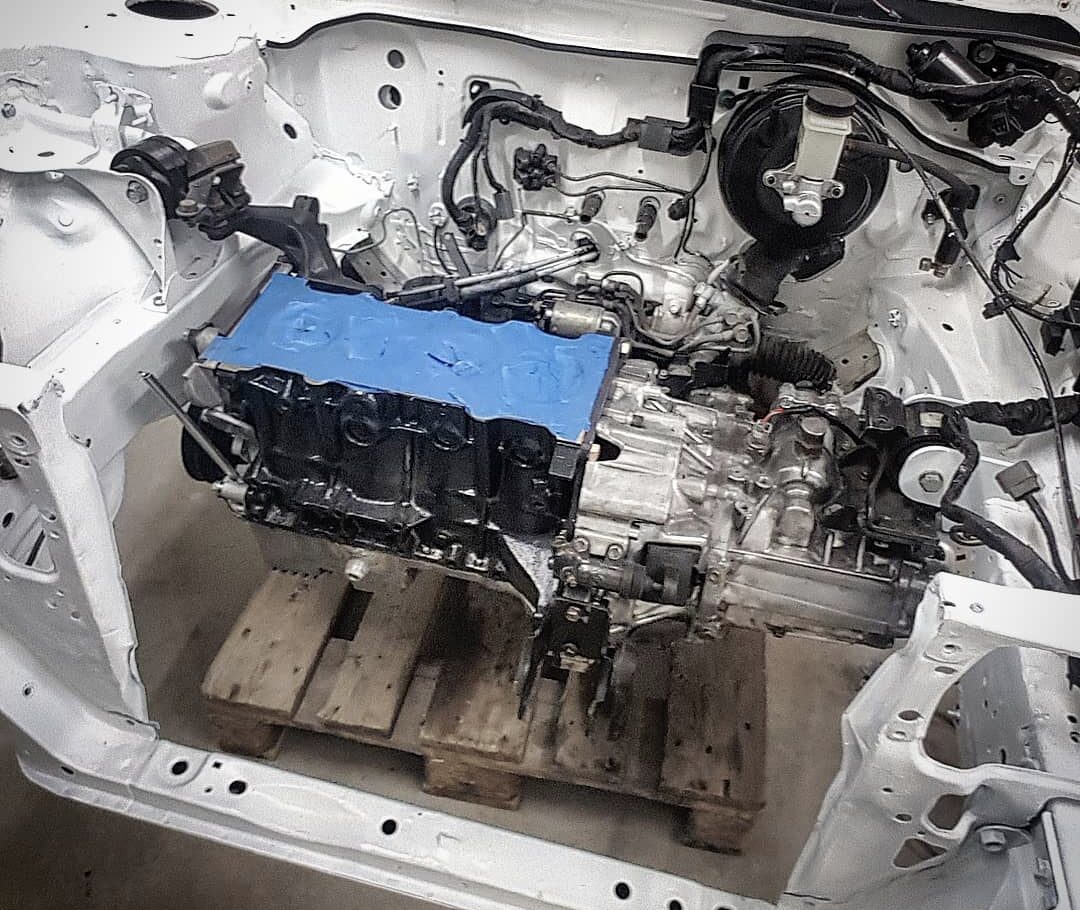
Stian also had to measure everything to get a custom turbo manifold made by a company in the States. It features a Pulsar G25-550 turbo, a 3-inch stainless steel exhaust from the turbo back that he welded himself, a 3-inch intercooler with 3-inch piping connected to a 3-inch throttle body.
A Tial 38mm wastegate and Tial blow-off valve, open air filter, Bosch 1300cc injectors, larger fuel rail, Aeromotive fuel pressure regulator, Walbro 520l fuel pump and filter that supports E85.
Link G4+ ECU, crank trigger system from Mazda MX-5, EGT sensors on each cylinder, custom aluminum radiator and gearbox oil cooler, and coil-on-plug from Toyota.
There’s likely been more money and hours spent than we can imagine, but the result speaks for itself.
Stian hasn’t tested 0–100 times or top speed yet, but considering this is a small and light car with all-wheel drive and enough power to put the fear of God in Beelzebub himself, I’m fairly certain it’s fun to drive.
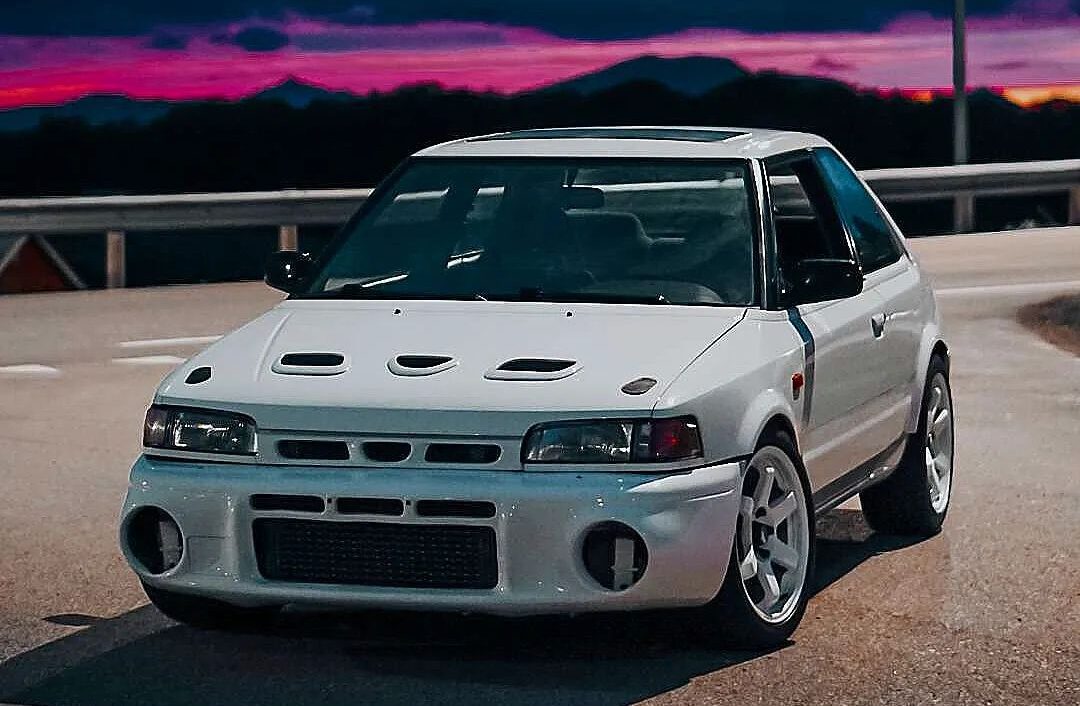
It also helps that it looks like a proper ’90s rally car, and it’s always fun to see people turn their heads as it drives by.
Stian truly loves the ’90s rally look of his Mazda and thinks it’s one of the coolest things ever, and I’m inclined to agree.
Just look at the aggressive front end! With those angry round headlights in the bumper and plenty of air intakes, it’s easy to draw parallels to two other rally beasts from that era — the ’90s Mitsubishi Lancer Evolution and Subaru Impreza WRX models.
Looking at it from the side, the car has a slight “underbite,” and this is actually how the 323 GT-R looked straight from the factory. So, no body kits or homemade solutions here — only original parts.
The owner informs us that the car has been parked for 10 years, which is how long it’s taken to completely renovate it. It was stripped down to molecules, sandblasted, and given a few coats of paint in the original Mazda color.
Eagle-eyed readers might notice that the wheel arches don’t look completely standard, and they’re right. The car has been widened by 4 cm on each side by welding on wheel arches from a Mk4 VW Golf.
Stian hasn’t spared any expense regarding the parts used on this unique Mazda. You won’t find cheap knockoff parts here; everything comes from reputable manufacturers, and he’s only picked from the top shelf. As he says, “it’s better to buy the right parts the first time,” and in the long run, this probably saves both time and money.
To complete the rally look, he’s gone for a set of white Avid1 AV6 wheels, wrapped in Federal 595 RS-R tires.
Behind the wheels, you can spot a Wilwood Ultralight Big Brake kit up front, while the rear features EBC discs originally meant for a Mazda 6, paired with sintered brake pads. Steel-braided brake lines provide better pedal feel and feedback to the driver.
K-Sport coilovers, adjustable arms with uniballs, and poly bushings all around (some bushings couldn’t be sourced, so he had them machined from stainless steel) give the car the perfect rally stance while significantly improving its handling. Who says you can’t have your cake and eat it too?
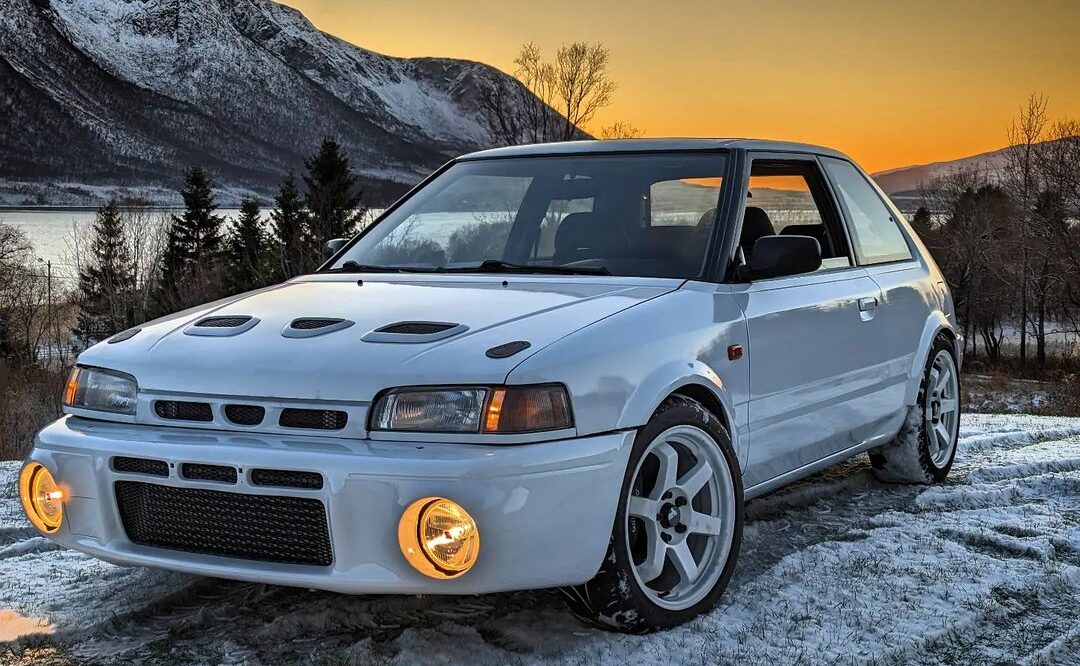
Inside, Stian has installed a complete interior from the Mazda 323 GT-R model and a Sparco steering wheel. He’s also extended the gear stick slightly to give it more of a rally style. Right in front of the driver, there’s a digital race dash. He also has a pair of bucket seats lying around somewhere, but hasn’t decided if he’ll install them or not.
It’s fair to say that Stian has truly found his dream car. He doesn’t foresee starting a new project anytime soon, so he expects this one to stay in his garage for quite some time.
Most of the work on Stian’s Mazda 323 GT4-R has been done by him, though he’s had good help from friends when necessary, so he thanks them for their efforts.
When asked if the car is finished, he mentions that he’s considering different cams, carbon axles, a new wiring harness, and other tweaks to save weight. He’s not opposed to a bit more power either, but it has to be “safe.” He’s also eyeing a dog box, but isn’t sure if it’s the right choice for a street car.
In time, he hopes to take it to various meets and track days. The nearest track is ACR — one of the best tracks in the Nordics — so he’ll definitely get to blow off all the frustration of the past decade there.
If you want to follow the 323 GT4-R project, you can follow Stian on Instagram.
Specs:
Make: Mazda
Model: 323 GT-X (GT4-R)
Year: 1991
Engine: Heavily modified Mazda 323 GT-R BPT 1.8L DOHC turbo I4
Power: 420 hp at the wheels — 500 hp at the engine
Torque: 455 Nm
Boost Pressure: 1.39 bar
0–100 km/h (0-62 mph): Not tested
Top Speed: Not tested
Drivetrain: Toyota Celica GT-Four
Styling/Exterior: Original Mazda 323 GT-R, widened 4 cm on each side
Paint/Wrap: Original Mazda white
Interior: Complete Mazda 323 GT-R, Sparco steering wheel, extended gear stick
Chassis and Brakes: Wilwood Ultralight Big Brakes up front. Mazda6 EBC discs and pads at the rear. Steel-braided brake lines. K-Sport coilovers, adjustable arms with uniballs, and poly bushings or stainless steel.
Wheels and Tires: Avid1 AV6 wheels with Federal 595 RS-R tires.

